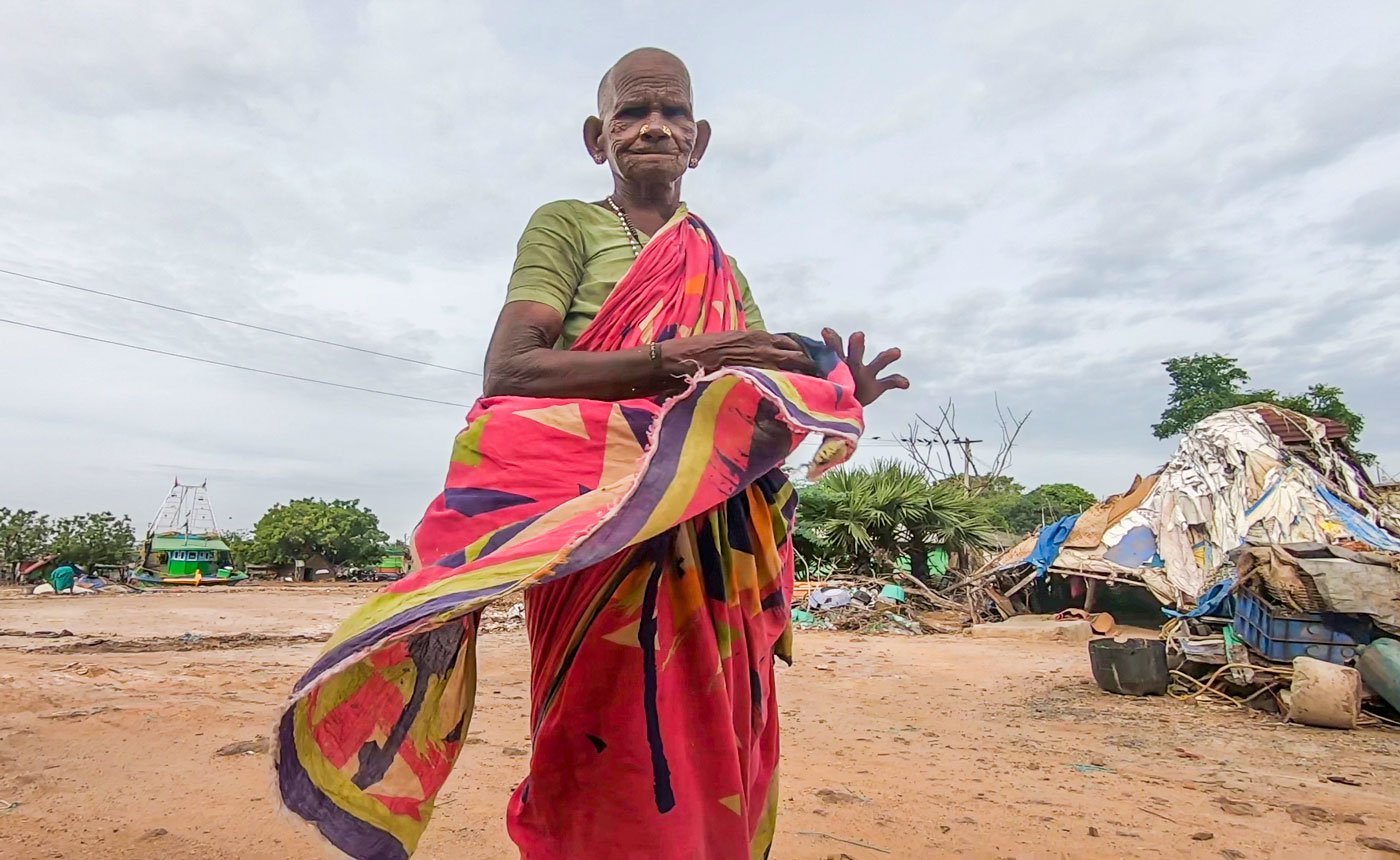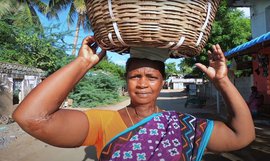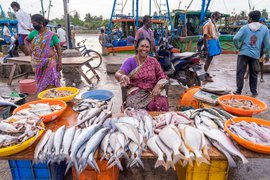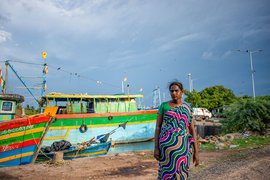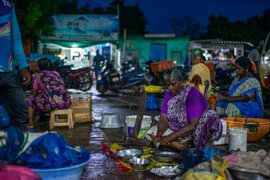Her grandfather named her ‘Puli’, Tamil for tiger, to match her energy – and that’s what K. Banumathi is still known as at the harbour. She has worked here, by the sea, for over 40 years, carving out a sustenance from waste – collecting, sorting and selling fish remnants. But Puli and many other women who work at the Cuddalore fishing harbour in Tamil Nadu don’t count as workers in government policies and are sliced out of any safety nets.
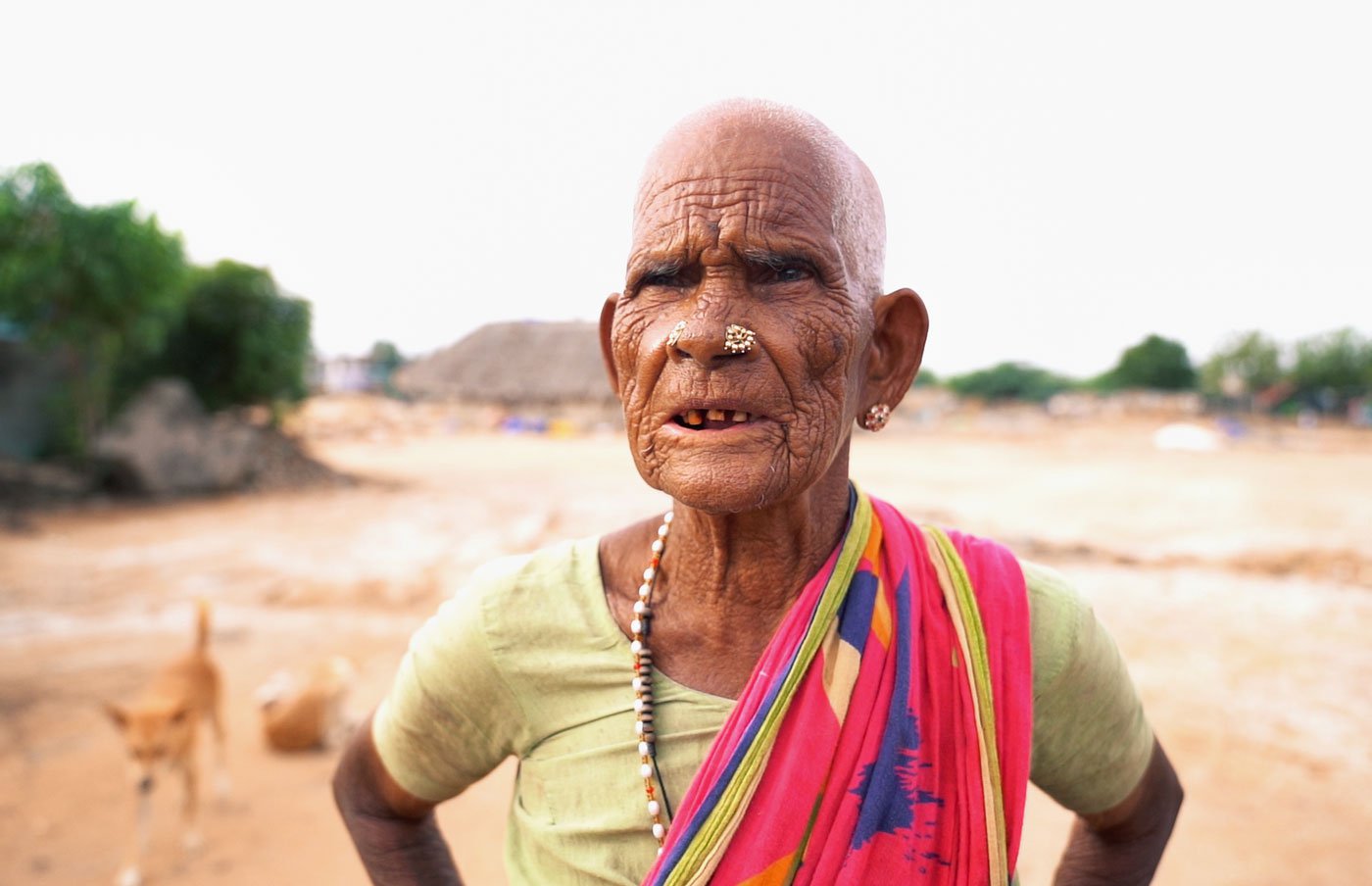
“I came here when I was nearly 35 and started auctioning fish,” says Puli, now 75 years old. At the Cuddalore Old Town harbour, located in the east of the city, auctioneers call for bids from traders once a boat reaches the shore. They receive 10 per cent of the sales as commission (until around 20 years ago, it was five per cent) if they have invested in a boat. When Puli arrived at the harbour all those years ago, her relatives introduced her to the job, and loaned her around Rs. 50,000 to invest in two boats – an amount she has since paid off through long hours of labour. As she grew older, Puli stopped auctioning and passed this work on to her daughter.
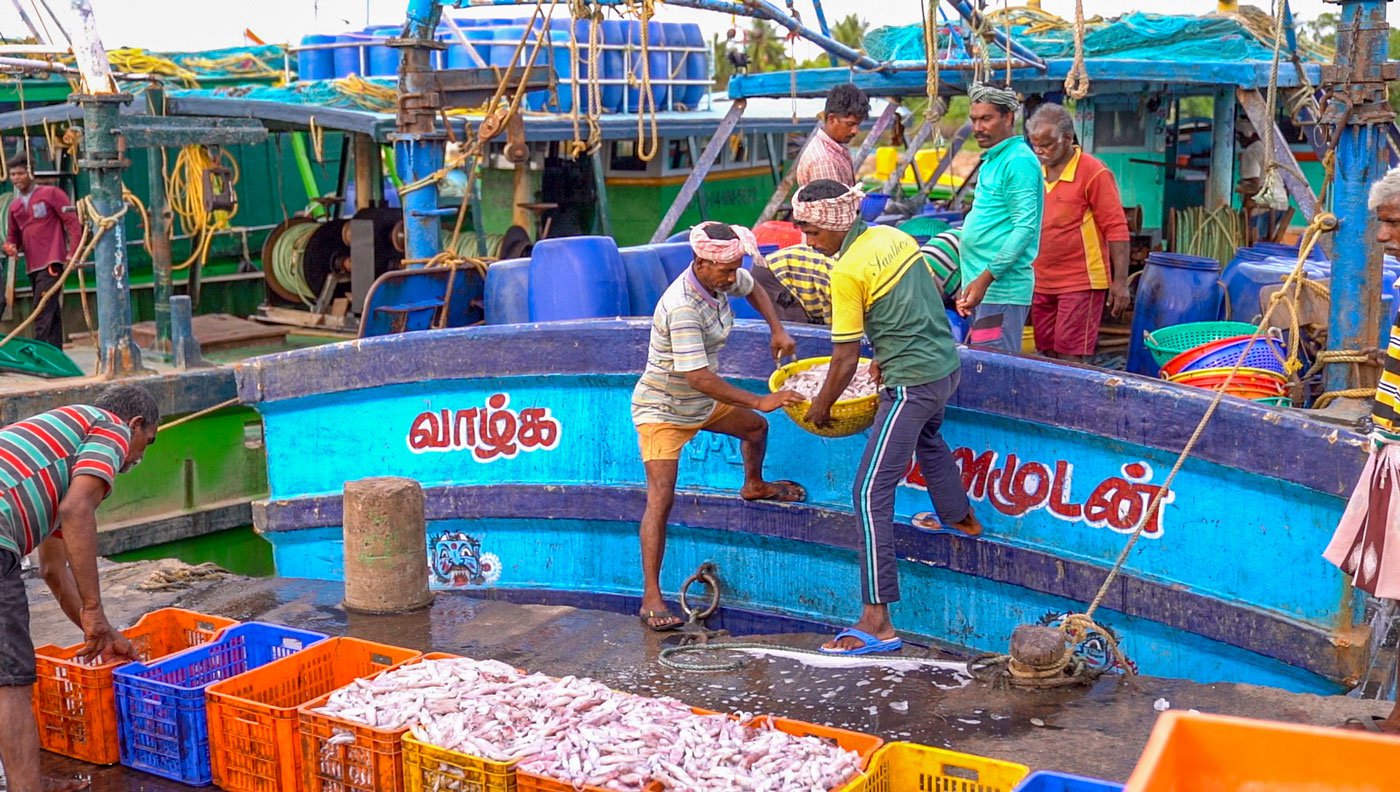
The busy harbour usually resonates with sounds – auctioneers inviting bids, traders shuffling about, loaders transferring catch, machines crushing ice, lorries coming and leaving, vendors doing business. This is a major fishing harbour in Cuddalore district and used by fisherfolk from Sothikuppam – Puli’s village – as well as four other neighbouring fishing villages. Until around a decade ago, notes the Central Marine Fisheries Research Institute, these five villages together accounted for 256 mechanised and 822 motorised boats at the harbour. (More recent data is not available.)
![“I’d started my kazhar business at the same time [as when I began working at the harbour],” Puli says, referring to her work of collecting and selling fish waste (the scales, heads, tails of fish, shrimp shells and other parts) and bycatch (such as seashells, shrimp, squid and small fishes). This is called kazhivu meen in Tamil, and, more informally, as kazhar. Puli is one of around 10 women at this harbour who collect fish waste and sell it to poultry feed manufacturers – it's a big industry in neighbouring districts like Namakkal. From Rs. 7 for one kilo of kazhar when she started out, the rate now, Puli says, is Rs. 30 per kilo for fish, Rs. 23 for fish heads and Rs. 12 for crab kazhar.](/media/images/04-Puli-3-NR-Puli_gets_by_on_shells_scales.max-1400x1120.jpg)
“I’d started my kazhar business at the same time [as when I began working at the harbour],” Puli says, referring to her work of collecting and selling fish waste (the scales, heads, tails of fish, shrimp shells and other parts) and bycatch (such as seashells, shrimp, squid and small fishes). This is called kazhivu meen in Tamil, and, more informally, as kazhar . Puli is one of around 10 women at this harbour who collect fish waste and sell it to poultry feed manufacturers – it's a big industry in neighbouring districts like Namakkal. From Rs. 7 for one kilo of kazhar when she started out, the rate now, Puli says, is Rs. 30 per kilo for fish, Rs. 23 for fish heads and Rs. 12 for crab kazhar .
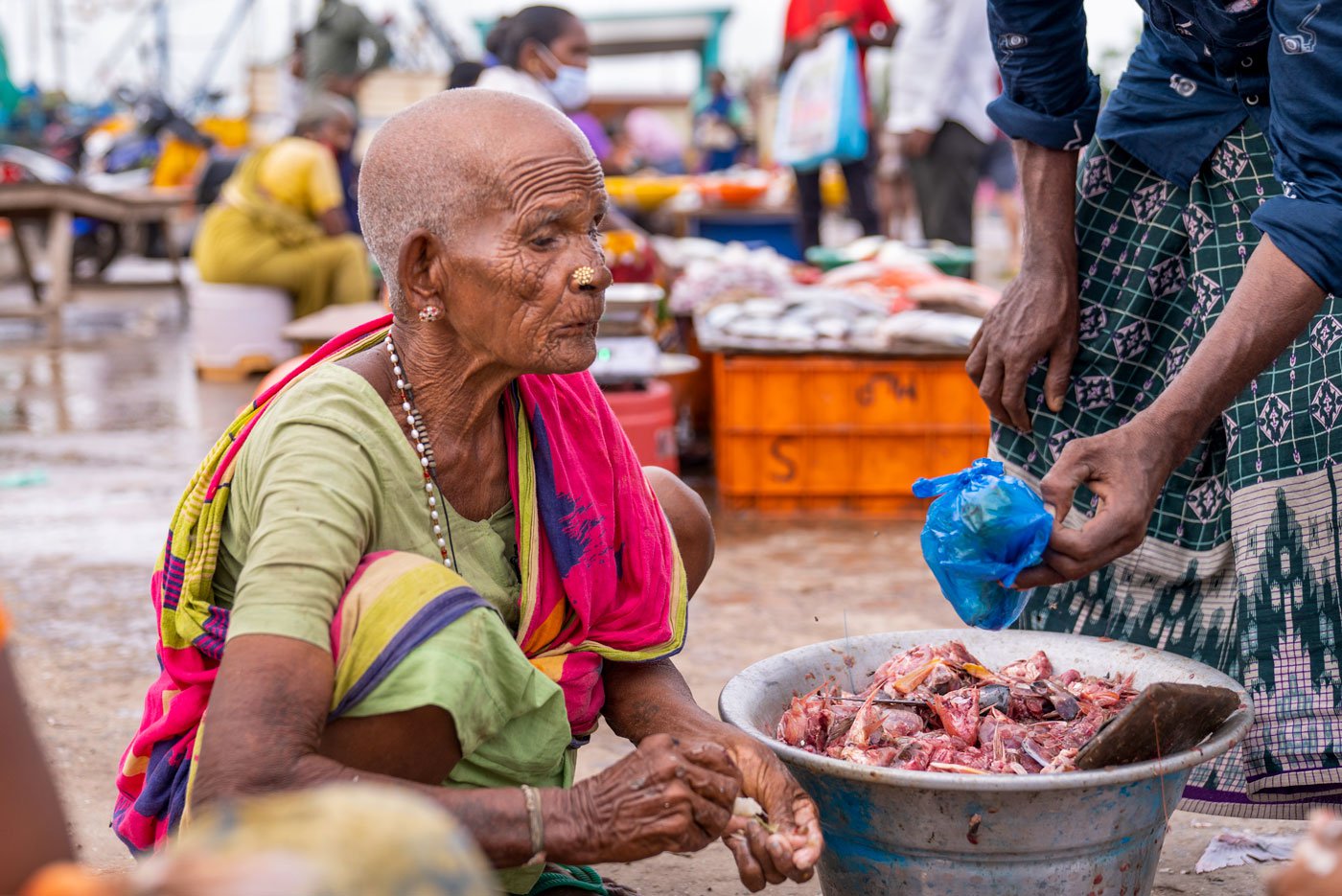
When she was 16, Puli got married to a fisherman in Nagapattinam district. They had four children, but Kuppusamy, her husband, was violent. So her father, a panchayat leader in Sothikuppam, asked her to return home with the kids. She lost her mother, who too worked as an auctioneer, three years later. “Then my relatives asked me to start auctioning,” says Puli. “I needed the money for my children.”
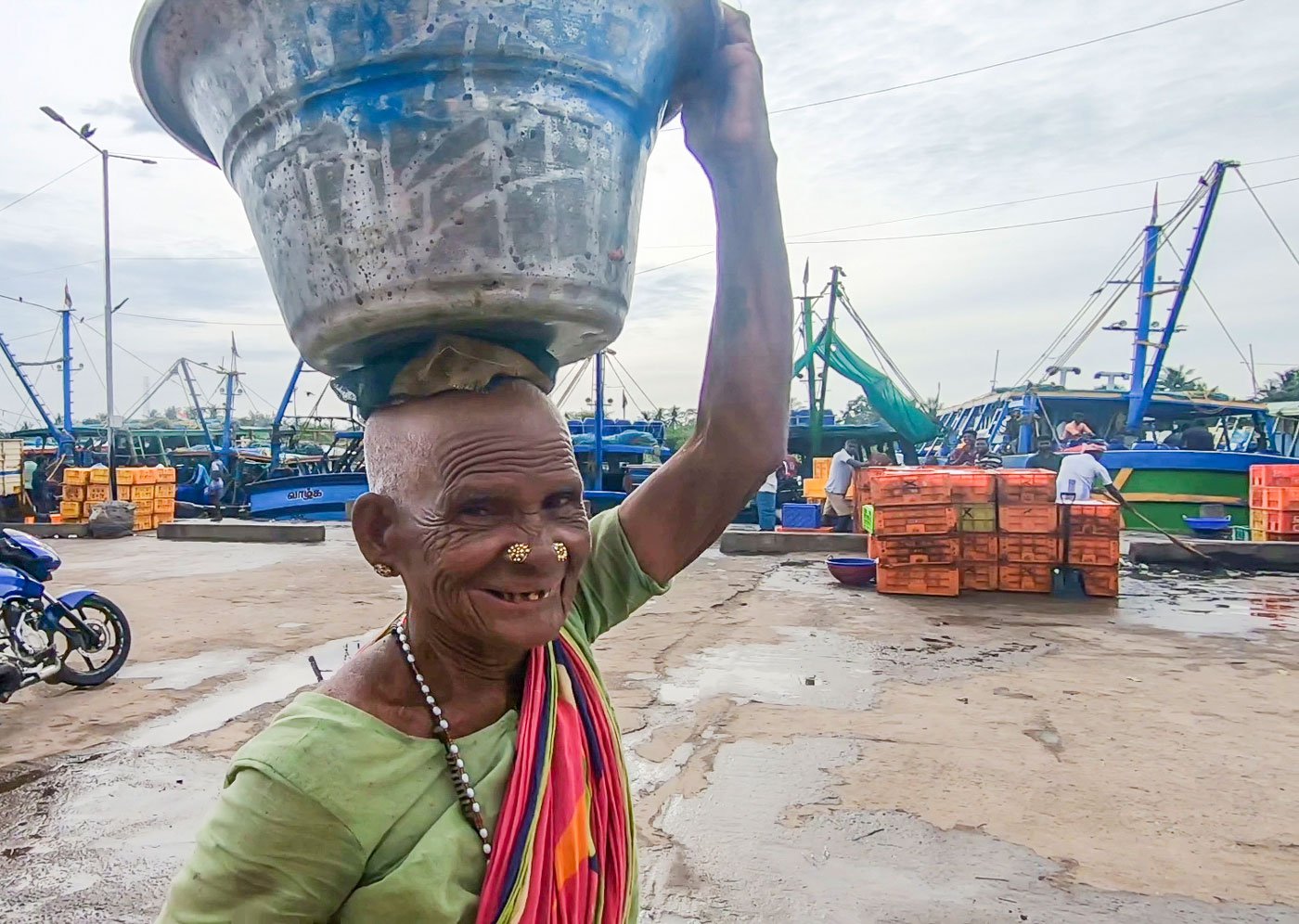
She is at the harbour from 4 a.m. to 6 p.m. – salting, packing selling. The kazhar is salted on the first day to reduce its smell. On the second day it’s dried and packed in mesh bags, which she purchases at the harbour for Rs. 4 each, and sometimes she reuses the jute salt-sacks that cost Rs. 15 each.
One bag of kazhar weighs 25 kilos, says Puli. Earlier, she could sell 4-5 bags a week, but with the Covid-19 pandemic, as well as a ban on ring seine nets, the scale of fish catch and trade has gone down. She now manages to sell two bags a week to to buyers from Namakkal. This brings her a weekly income of about Rs. 1,250.
Women engaged in all tasks – auctioneers, vendors, those drying fish or sorting kazhar – at the Cuddalore harbour speak of the uncertainties of their daily income. Many younger women in the fishing villages prefer to stay away from fisheries. As a result, usually older women work at the harbour.
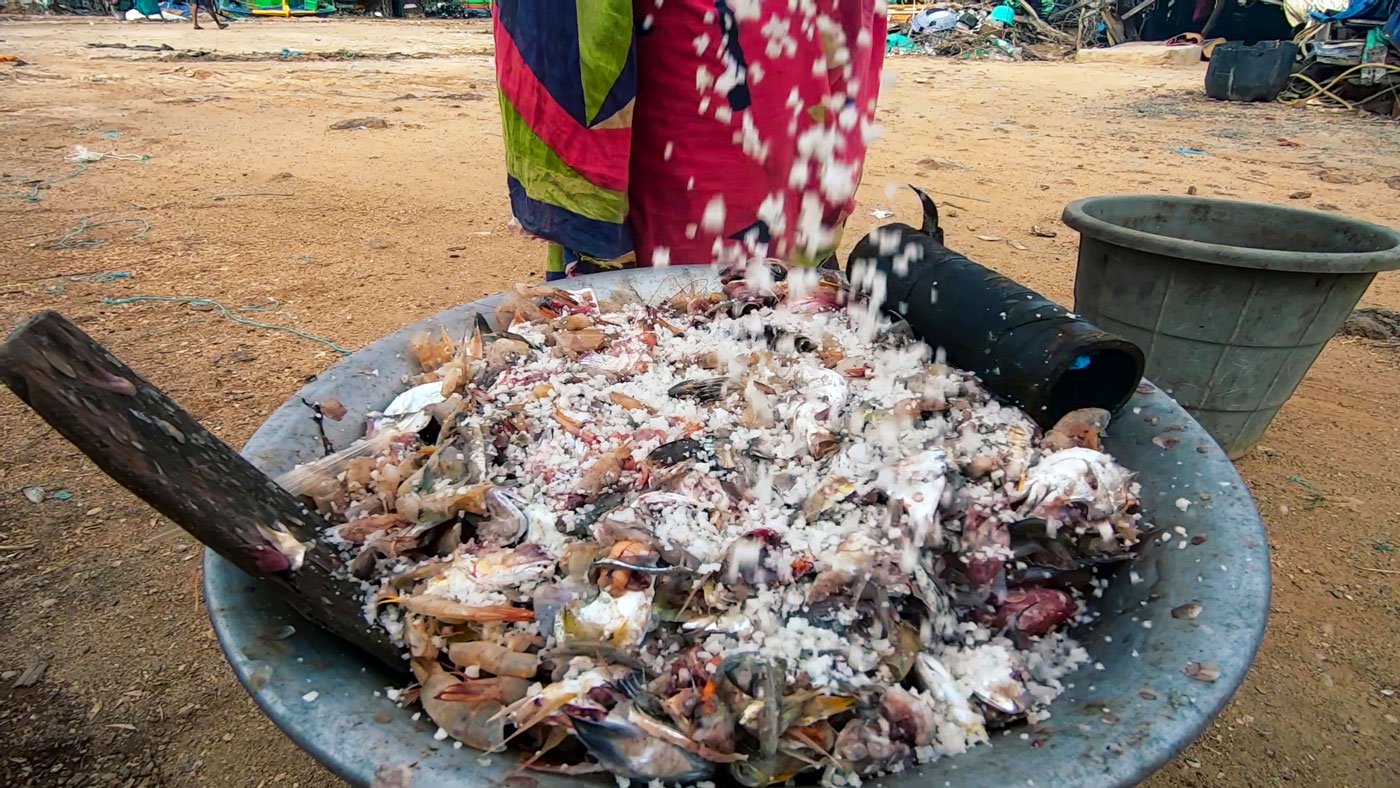
“I don’t pay anything for the kazhar ,” says Puli. “I collect it from women cutting fish at the harbour.” Every day, at 4 a.m., she starts collecting the fish waste from vendors and others who remove the scales and entrails as per customers’ needs. While Puli doesn’t pay for the kazhar , she sometimes buys cold drinks for the vendors and cutters. “I help them clean their work area, " she says, "talk with them and exchange news.”
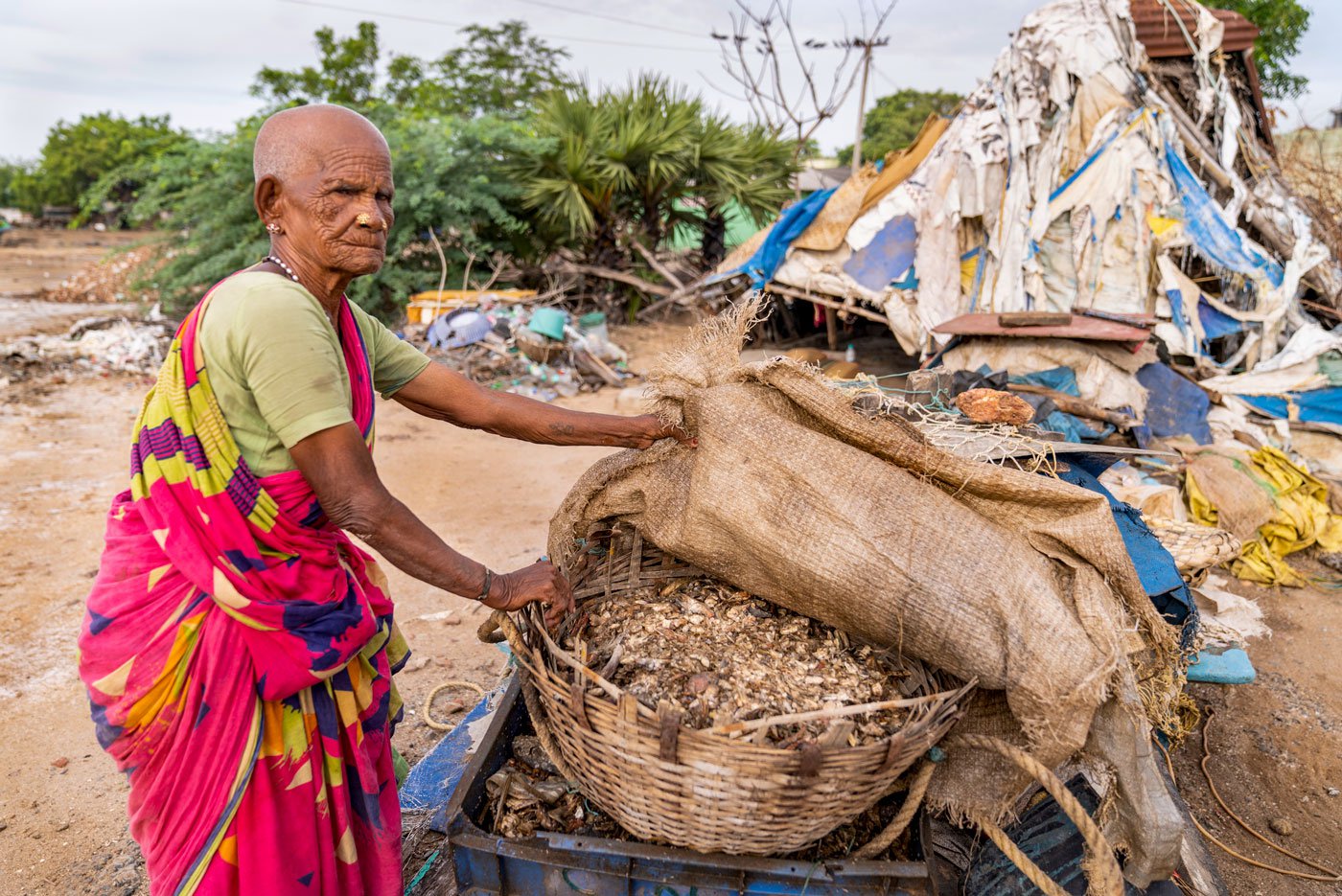
The 2020 policy acknowledges the need to enhance women's participation in fisheries through cooperatives, schemes and other steps to improve work conditions. However, the focus of such schemes is usually on mechanisation rather than the everyday issues of women engaged in post-harvest fisheries.
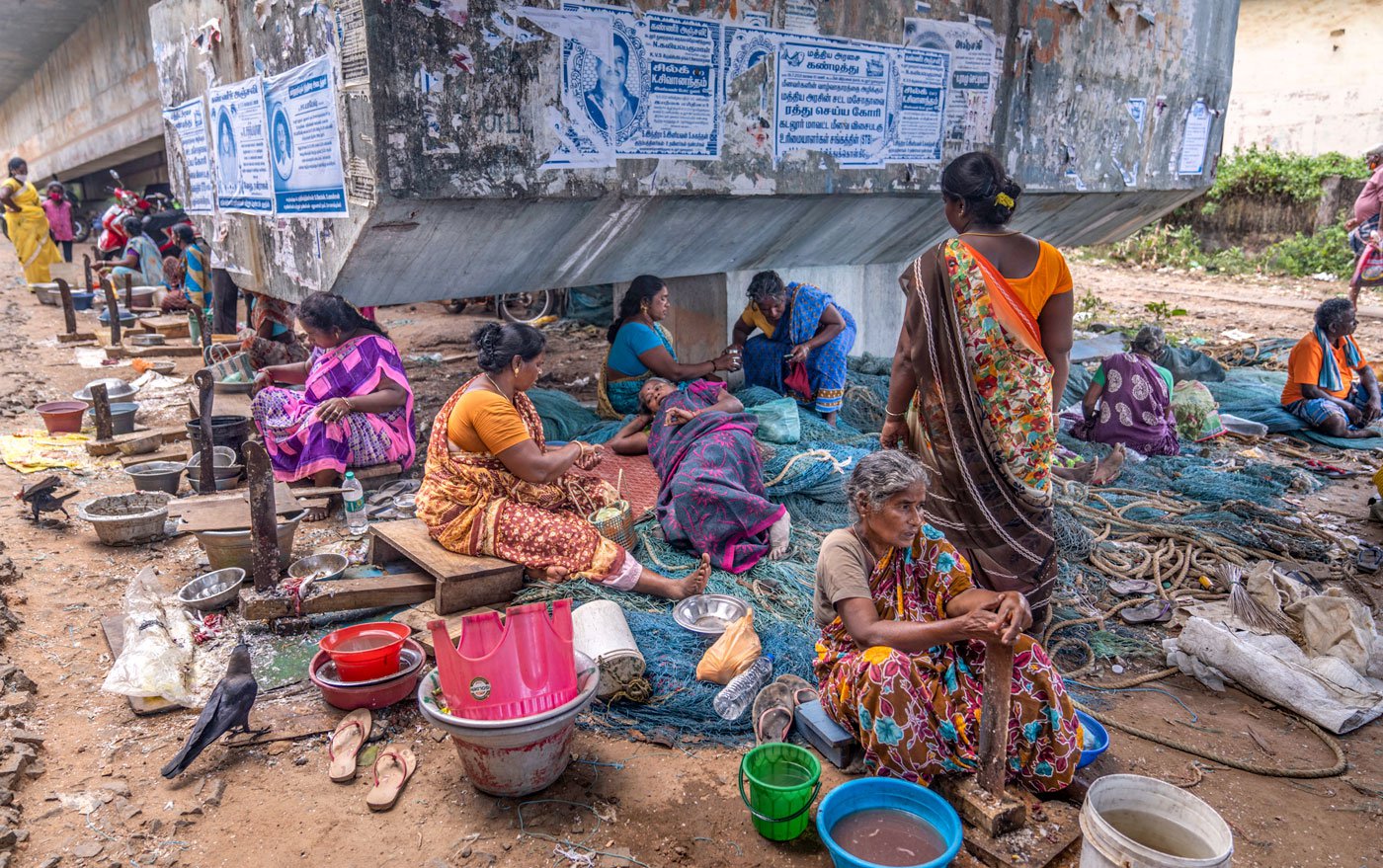
And instead of measures to help women in fisheries, they have been increasingly marginalised due to coastal transformations, and a policy push towards capital-intensive fisheries and export promotion. These changes barely recognise women’s contributions to the sector. Other steps have added to their marginalisation, including increased investment in macro-infrastructure and the setting up of the Marine Products Export Development Authority in 1972, which enhanced exports and disincentivised small-scale fishing. The process gained further momentum after the 2004 tsunami, with money invested in new boats and equipment.
Over time, more and more local women have been excluded from post-harvest activities. Women at Cuddalore harbour speak of the lack of space there for their tasks, such as vending, cutting, drying or removing waste. Only a few women vendors are provided with ice boxes by government agencies, and only some villages and towns have allocated spaces for them in markets. Often, in the absence of transport facilities, they end up walking long distances to sell fish in faraway locations.
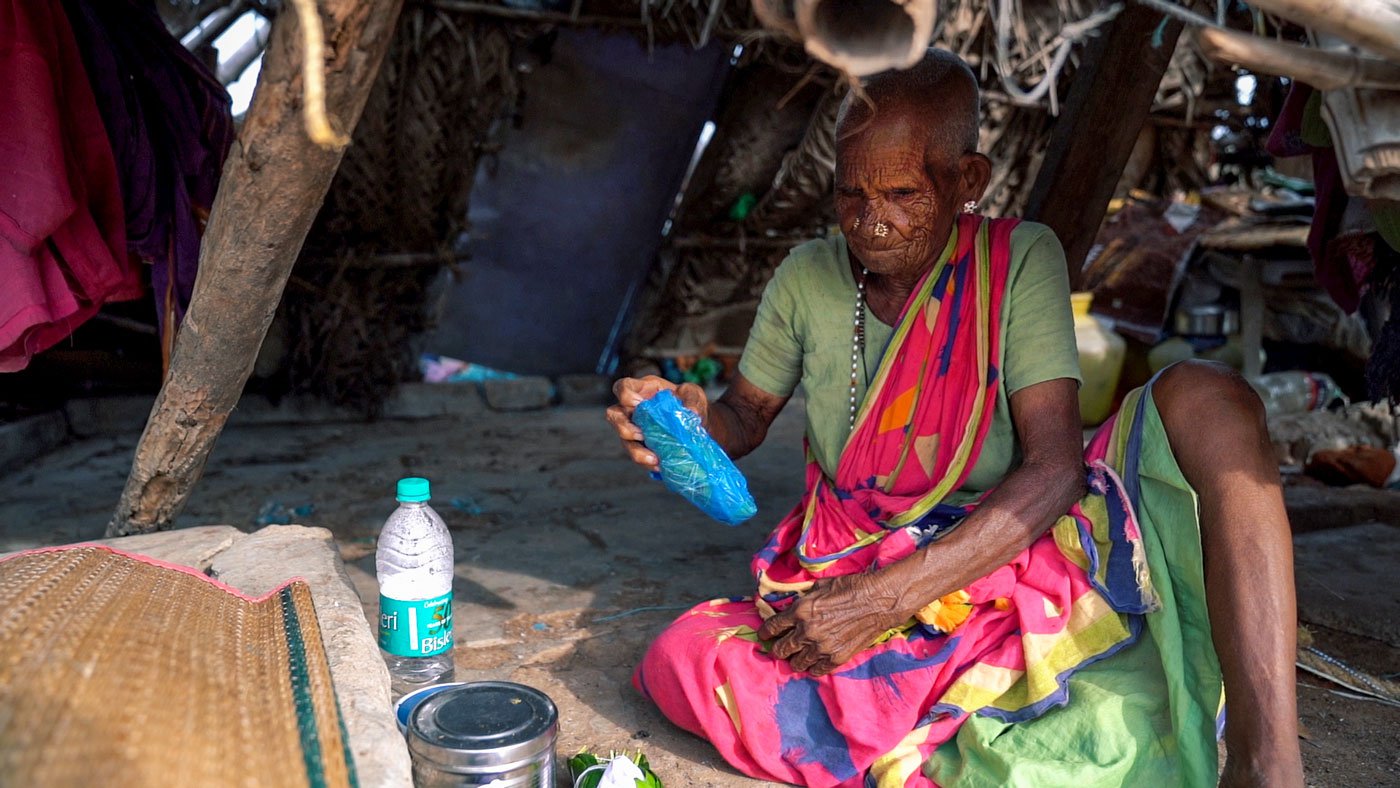
“I live here at the harbour in a small shack, so that I am close to my business,” says Puli. But when it rains she goes to her son Muthu’s house, around three kilometres away in Sothikuppam. Muthu, 58, a fisherman at the harbour, brings her food every day at work, and she receives an old age pension of Rs. 1,000 every month. Puli sends off most of her fish-work income to her children – two sons and two daughters, all in their 40s and 50s and working in the fisheries sector in Cuddalore district. “What am I going to take with me?” she asks. “Nothing.”
With support from U. Dhivyauthiran, Nicolas Bautes, Tara Lawrence, Ajit Menon, P. Arun Kumar, Bhagath Singh, and others who contributed to this research and documentation.
This story is part of a series of 25 articles on livelihoods under lockdown, supported by the Business and Community Foundation.
